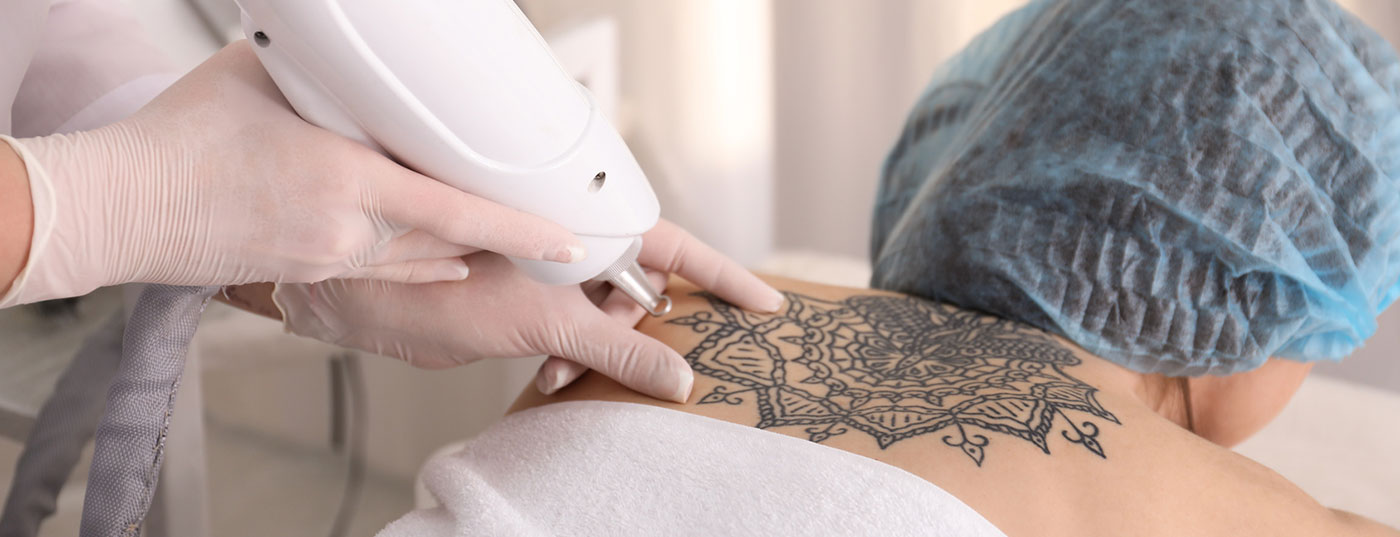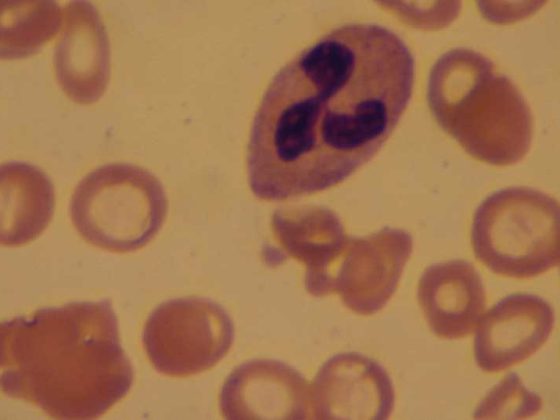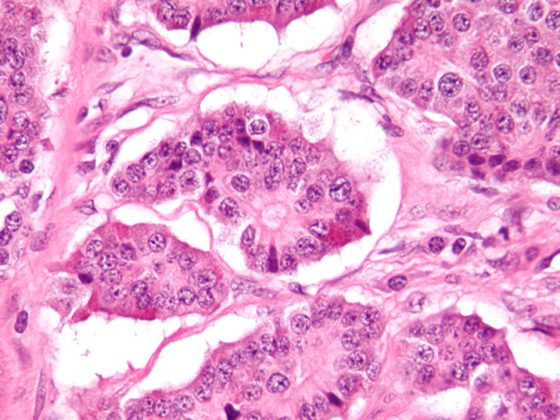Modern laser medicine offers a wide range of possibilities and the demands of patients are high. This makes undesirable effects all the more serious. How can the risk of side effects be reduced?
Using various case studies, Bettina Rümmelein, MD, specialist in dermatology and president of the SGML, Zurich, illustrated the effects of faulty laser treatments in connection with tattoo removal. Thanks to technological advances, results and side effect risks have improved greatly in recent years, so tattoo removal by laser is usually safer compared to other methods such as excision, dermabrasion, or salabrasion [1].
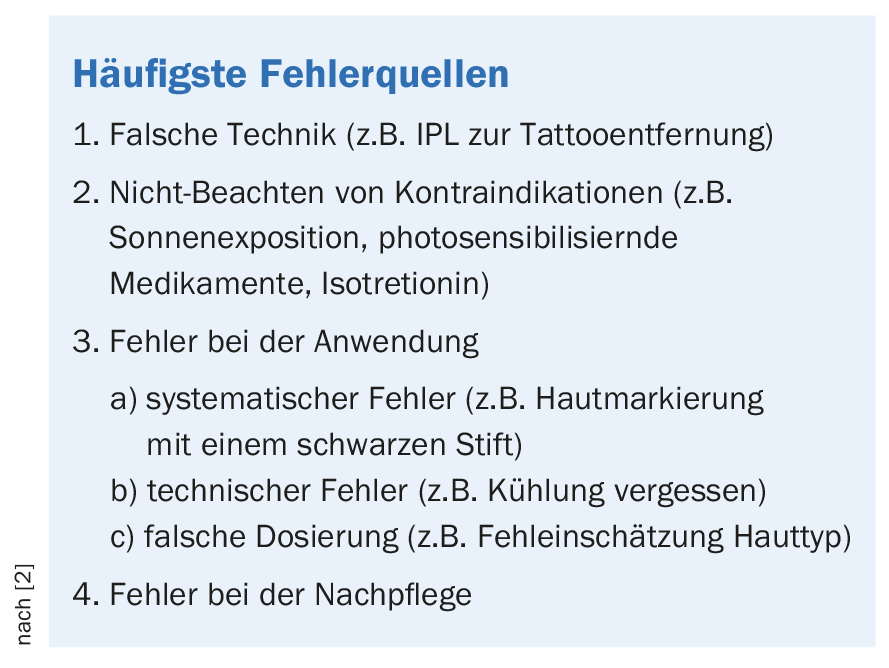
Control sources of error
The reasons for poor outcomes are diverse and may be due to errors at all stages of treatment (box) [2]. To avoid contraindications, a detailed history should be taken (photosensitizing medications, isotretinoin treatment, herpes infection, type of tattoo, skin type, keloid tendencies, sun exposure habits) [1]. The selection of the appropriate laser device is also very central; the standard nowadays are Q-switched lasers (Tab. 1), although picosecond lasers are now also available, which achieve even better effects thanks to the ultra-short pulse duration. During laser treatment, the most common sources of error are systematic (e.g., marking the skin with a black pen), technical (e.g., forgetting to cool), or dosage-related (e.g., incorrect dosage due to misjudgment of the skin type or an incorrect entry).

Inform transparently
The patient should be informed about the benefits and risks of the treatment (informed consent); realistic expectations and a good relationship can have a positive effect on the course and outcome [1]. Tattoo removal using laser/selective photothermolysis is a lengthy procedure; on average, approximately 7-10 treatment sessions are required [1]. By taking the above precautions into account, the risk for the occurrence of acute and/or delayed complications (Overview 1) can be minimized, but cannot be completely excluded.
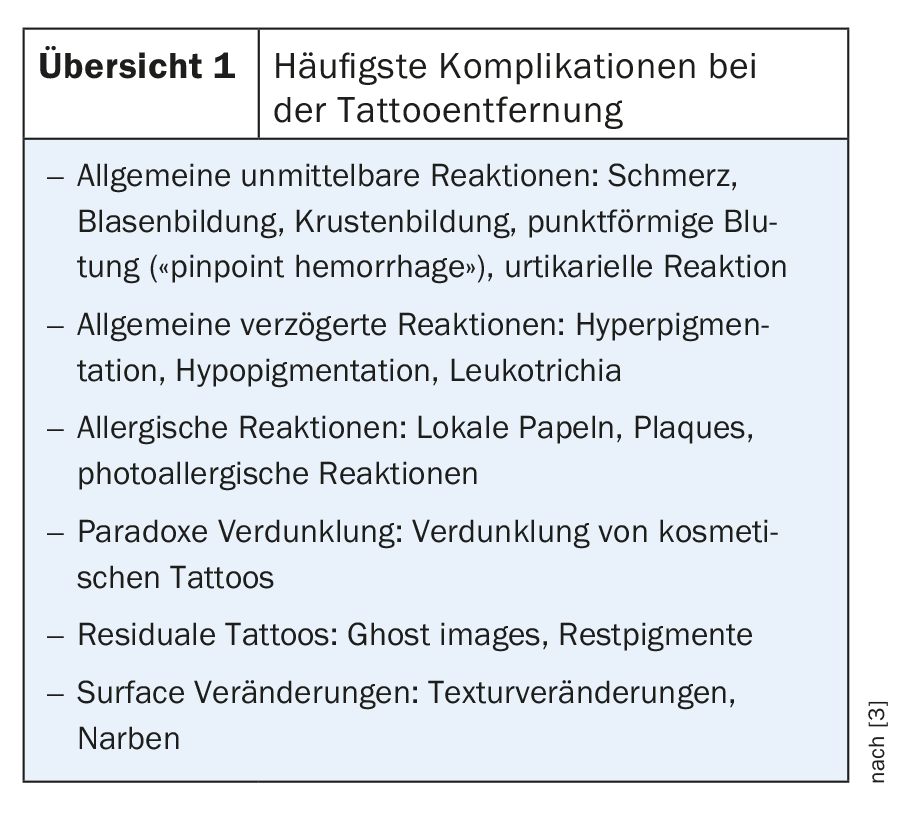
Regarding the post-treatment phase, patients should be instructed on the measures that can be taken to temporarily relieve frequent swelling, redness, and other skin irritations (e.g., cold compresses, antibiotic or other skin care products for about 10-14 days). If bubbles form, they can be lanced with a sterile needle and tied [1].
For a comparison of the baseline with the treatment result and progress, digital photos can be helpful, although the lecturer mentioned that in her experience some patients would have objections for psychological reasons regarding the further use of these pictures for the purpose of publication (e.g. fear that the tattoo artist would find out about it).
Source: SGML Lasers&Procedures, January 17, 2019, Zurich
Literature:
- Ho S, Goh CL: Laser Tattoo Removal: A Clinical Update. J Cutan Aesthet Surg 2015; 8(1): 9-15.
- Rümmelein B: Slide presentation, Bettina Rümmelein, MD, SGML Lasers&Procedures, Jan 17, 2019, Zurich.
- Khunger N, Molpariya A, Khunger A: Complications of Tattoos and Tattoo Removal: Stop and think before you ink. J Cutan Aesthet Surg 2015; 8(1): 30-36.
DERMATOLOGIE PRAXIS 2019; 29(1): 29-30

